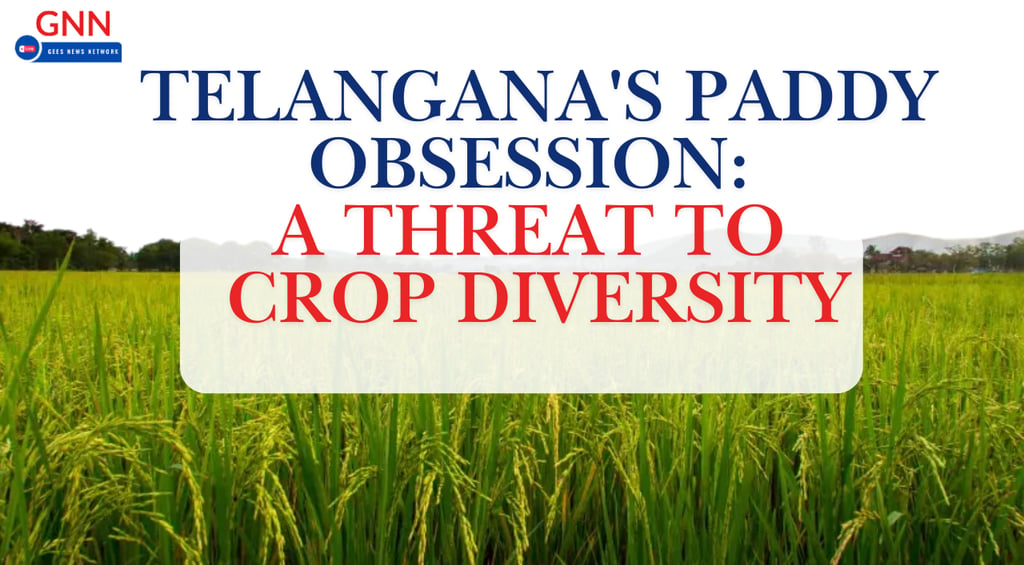Telangana's Paddy Obsession: A Threat to Crop Diversity
Telangana's Paddy Obsession
FEATURED BUSINESS NEWSINDIA NEWS
12/12/20241 min read


Telangana's agricultural landscape is undergoing a significant shift, with paddy cultivation dominating the scene. This trend, highlighted by recent RBI data, has raised concerns among experts about the potential negative impacts of monoculture.
The state's focus on paddy production, driven by government policies and incentives, has led to a decline in the cultivation of other crucial crops. The area under fruits, vegetables, sugarcane, coarse cereals, oilseeds, and pulses has significantly reduced over the past few years.
This overreliance on paddy has several implications:
Soil Health: Continuous paddy cultivation can deplete soil nutrients, leading to reduced fertility and increased susceptibility to pests and diseases.
Water Scarcity: Paddy is a water-intensive crop, and excessive irrigation can strain water resources, particularly during periods of drought.
Market Fluctuations: Overproduction of paddy can lead to price fluctuations and reduced income for farmers.
Nutritional Security: A diverse crop mix is essential for a balanced diet. A focus on a single crop can compromise food security and nutritional diversity.
To address this issue, experts and policymakers are urging the government to adopt a more balanced approach to agriculture. This includes:
Diversification: Promoting the cultivation of a variety of crops, including fruits, vegetables, oilseeds, and pulses.
Sustainable Agriculture Practices: Encouraging the adoption of sustainable farming methods, such as organic farming and precision agriculture.
Market Support: Providing adequate market infrastructure and support to farmers to ensure fair prices for their produce.
Water Conservation: Implementing efficient irrigation systems and water conservation techniques.
By taking these steps, Telangana can ensure a sustainable and resilient agricultural sector that benefits both farmers and consumers.


